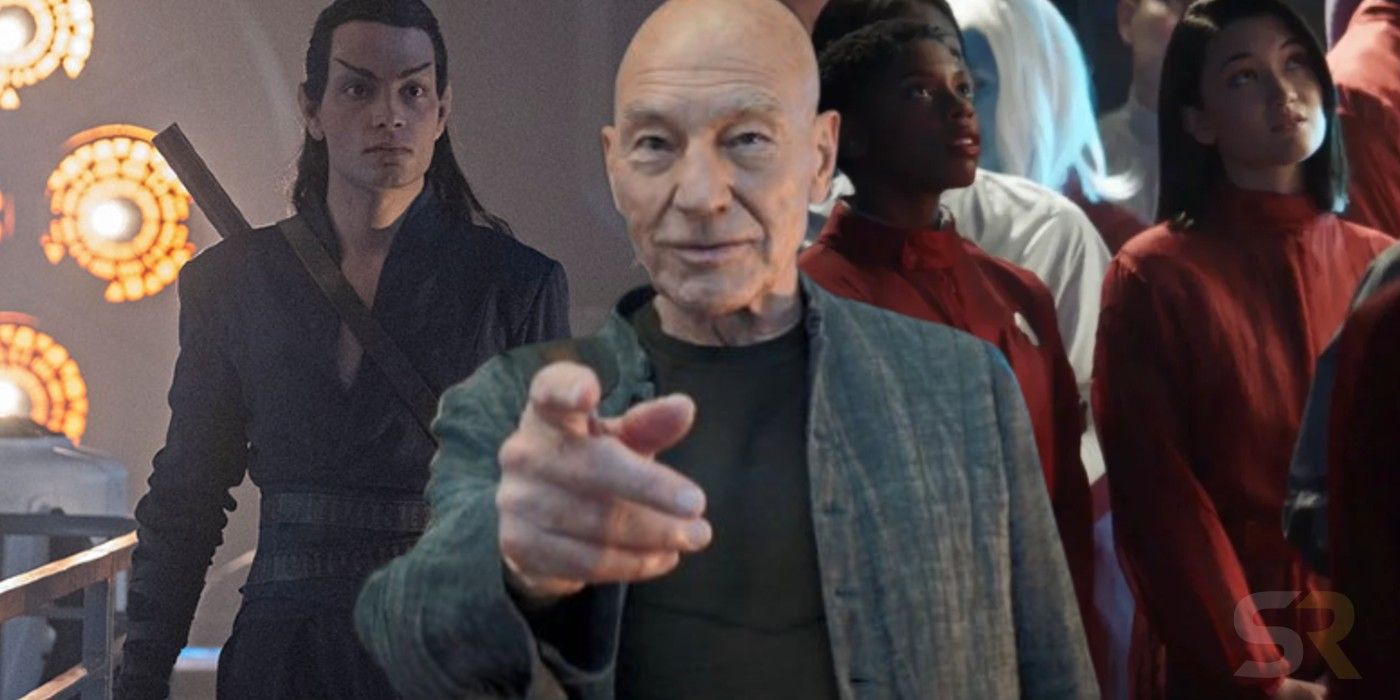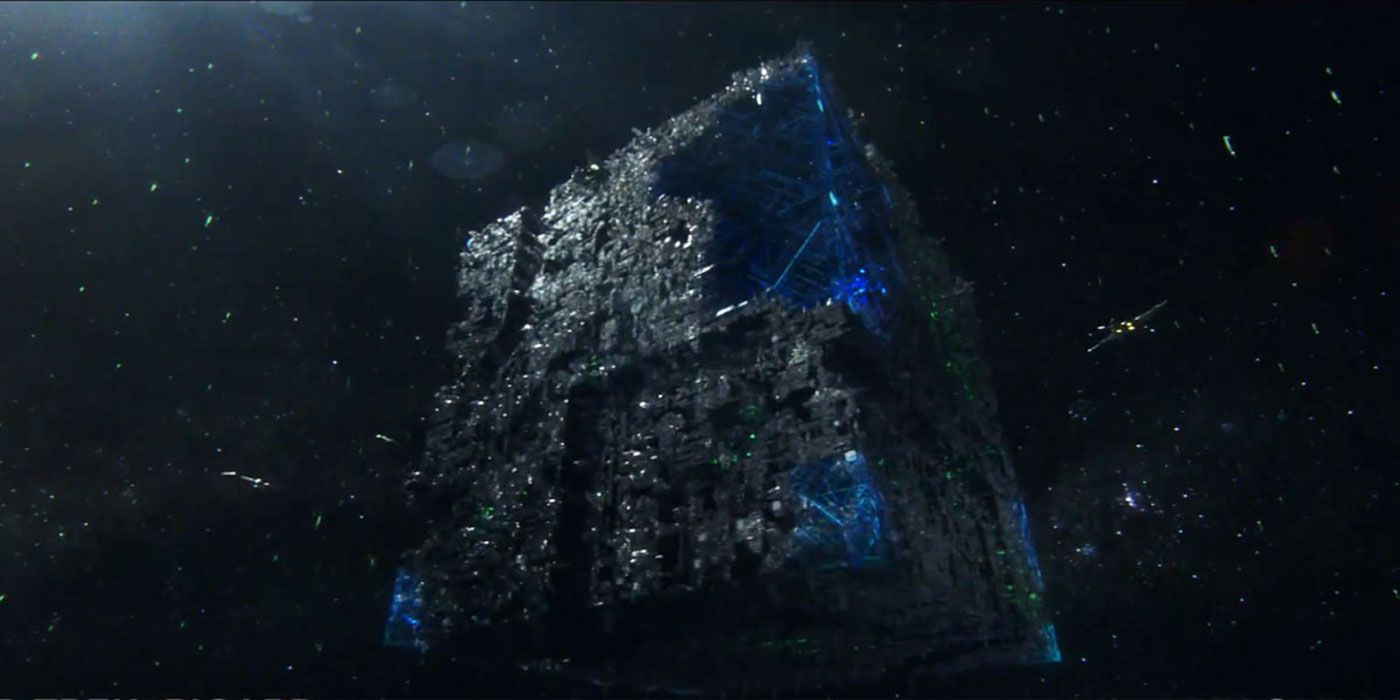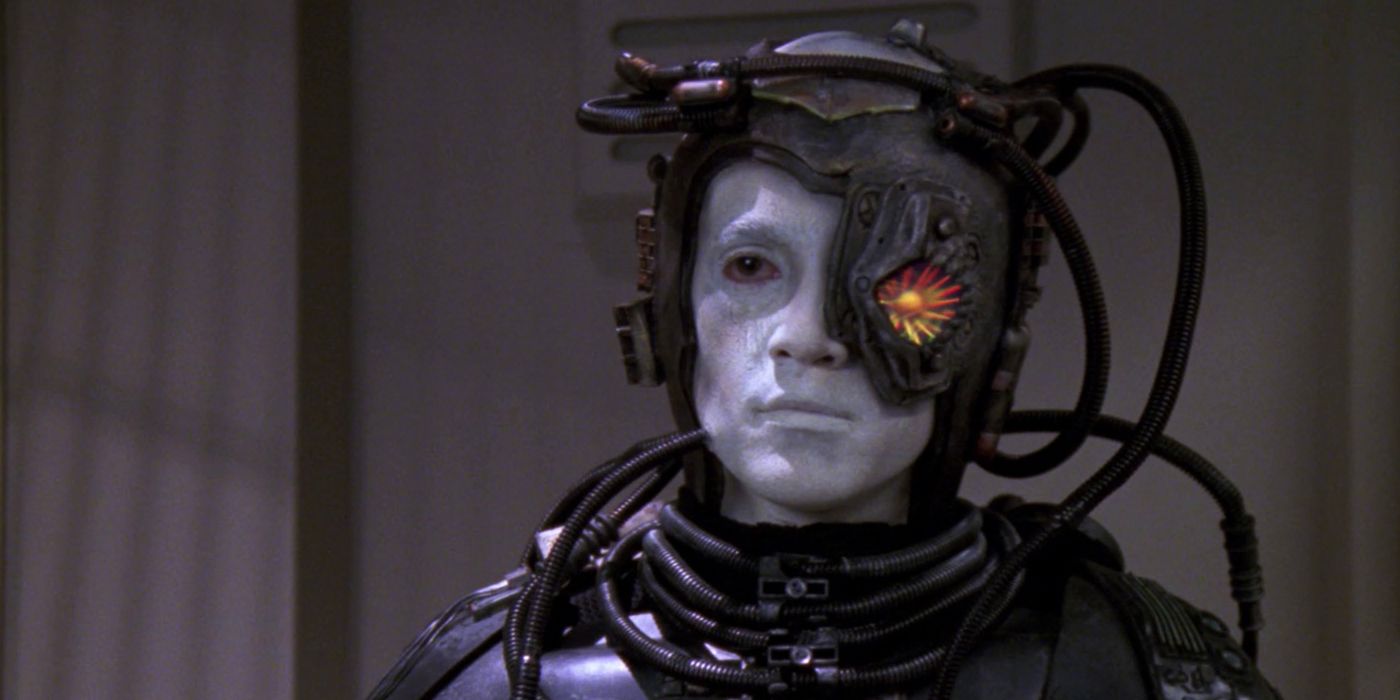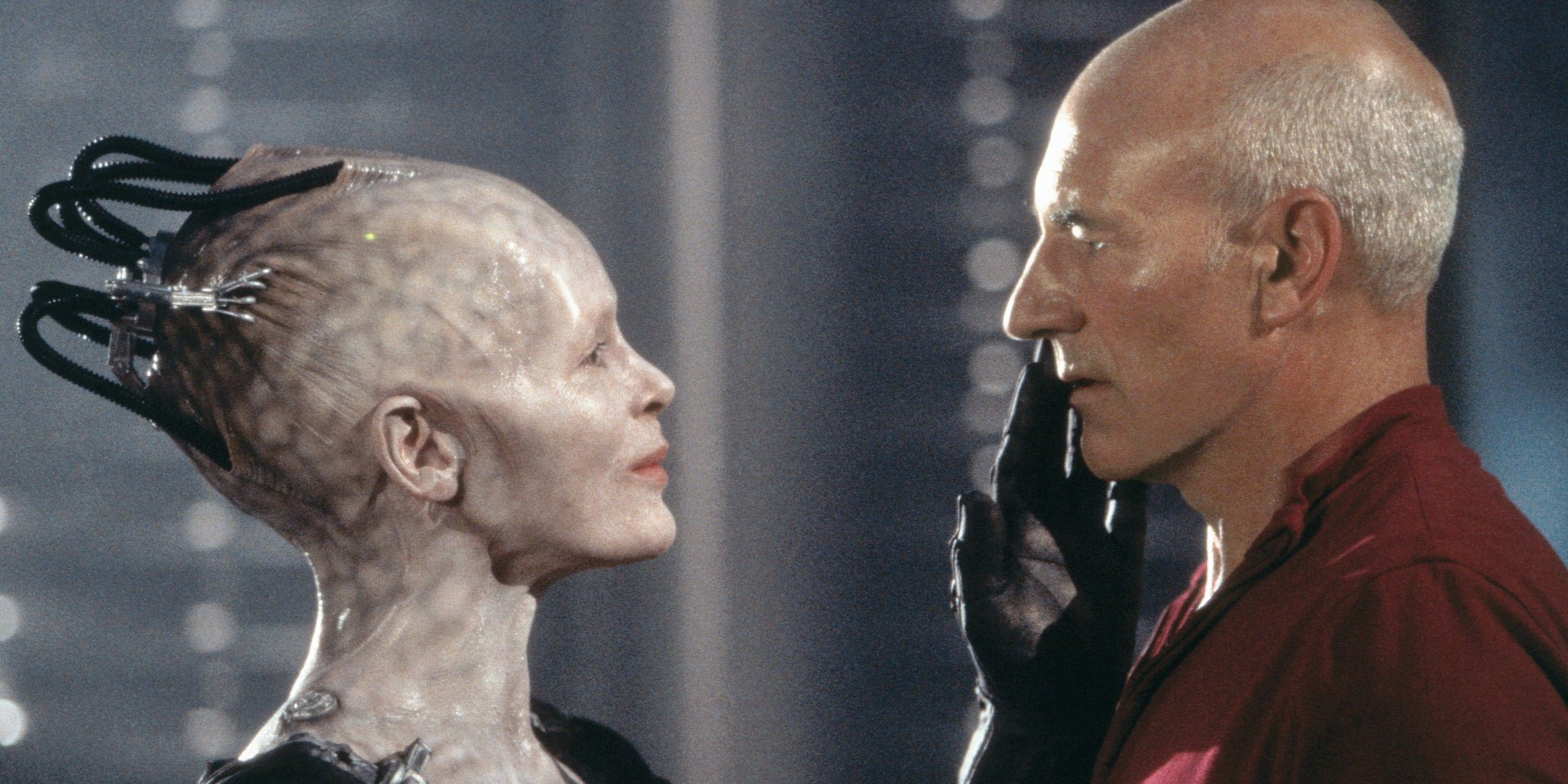Star Trek: Picard will heavily feature the Borg and Romulans with a cataclysmic offscreen event that may have intertwined their fates forever. Picard takes place roughly twenty years after the events of Star Trek: Nemesis, the fourth and final Star Trek film featuring the cast of Star Trek: The Next Generation. That film ended with the cautious beginnings of a new, more open relationship between the Federation and the Romulan Empire following the death of Reman upstart - and Picard clone - Shinzon, memorably played by a young Tom Hardy.
The Romulans were never one of the more formidable antagonistic races on TNG. Originally framed as a sort of late Cold War stand-in for the Russians - much how Star Trek: The Original Series utilized the Klingons - the TNG Romulans came off as also-rans, more of a cheap annoyance than a real threat. The show's most lethal enemy would come in the form of the Borg, the cybernetic hive race bent on assimilating all life into its collective. They were featured in the two-part epic "The Best of Both Worlds," generally considered one of the finest stories in all of science fiction, and would continue to terrorize Jean-Luc and friends over the years, including in the feature film Star Trek: First Contact, where the Enterprise had to follow the Borg back in time to prevent them from assimilating Earth immediately after World War III in the mid 21st century (we'll try not to dwell on the implications of that too much).
So how will Star Trek: The Next Generation's greatest and lamest villains intersect to create the narrative of this new series? The answer may be hiding in plain sight, with a few telling frames from the show's transcendent San Diego Comic-Con trailer.
The Borg Disrupted The Evacuation Of Romulus
The first J.J. Abrams Star Trek film in 2009 went out of its way to make it clear this was an alternate reality offshoot of the main continuity, not a reboot. This was partially accomplished by including Leonard Nimoy as an elderly Spock from 2387. Spock had been sent back in time when he attempted to prevent a massive supernova from destroying not only Romulus, but most of the galaxy. Spock was successful in stopping the destruction of the galaxy, but he couldn't save Romulus, which was wiped out by the supernova.
Both Picard's teaser and full trailer suggest Picard and an armada of ships were on hand in a massive rescue effort to evacuate Romulus before it was destroyed. However, in the trailer we get a brief glimpse of a Borg cube, seemingly surrounded by heavily damaged Romulan ships. If the Borg took advantage of the crisis to attempt to assimilate Romulus, they may have caused many, many more Romulan fatalities than was necessary, relegating them to a refugee race on the verge of extinction. The hatred among the surviving Romulans for the Borg would explain why there are armed Romulans apparently guarding a group of Borg drones removed from the collective. Perhaps when the supernova hit and destroyed the planet, the Borg cube was disabled, allowing the surviving Romulan fleet to take prisoners. This would explain why Romulans appear to be experimenting on Borg corpses in the trailer as well.
Hugh's Borg Will Be Caught In The Crossfire
Hugh, the first Borg drone freed from the collective in the classic Star Trek: The Next Generation episode "I, Borg," will be returning for Star Trek: Picard. Not seen or heard from since the TNG season seven premiere "Descent, Part 2," Hugh is apparently still leading his pack of freed Borg drones, last seen struggling with the chaos of their re-emerging humanity and Borg programming. Hugh and his group mostly just wanted to be left alone, but if galactic tensions toward the Borg have escalated, his group of pacifistic former drones could end up a target for those motivated by hate.
RELATED: Star Trek: Everything That Picard Is A Sequel To
This would also be the sort of refugee story that likely brought Patrick Stewart back to the franchise. While Star Trek has always been political, there have been hints from the show's cast and crew that this might be a more pointedly political story than the franchise has tackled in the last two decades. The Borg as refugees would likely be a potent metaphor for what's happening in Europe regarding Syrian refugees, and in America with South and Central American refugees. Fans who find Star Trek: Discovery too progressive may be in for a real shock when they got a load of Picard, but that progressive lean has been baked into the character - and really, the franchise as a whole - from the very beginning, and it's encouraging that Star Trek is willing to tell socially relevant stories again.
Was Picard Responsible For Romulan Deaths At The Hands Of The Borg?
Jean-Luc Picard is often held up as the greatest captain in the franchise's history; he's almost certainly the most accomplished within the fiction itself. But after he was assimilated into the Borg collective in "The Best of Both Worlds," Picard developed a blindspot when it came to the cyborg zombies. He was initially unwilling to admit Hugh was a sentient, independent being, his anger blinding him to the obvious. In Star Trek: First Contact, Picard grew so violent and unsteady in the wake of the Borg's invasion of the Enterprise, he very nearly lost control, which would have had dire consequences for humanity. Picard's PTSD regarding his assimilation never really left him, despite several attempts to get past it on Picard's part. It seems likely that a Pulitzer Prize-winning showrunner like Michael Chabon might find some rich storytelling ground in Picard's greatest weakness.
If he led Starfleet's rescue mission to Romulus, it's possible the Borg's arrival was overwhelming to him, causing him to lose focus at a critical moment or advocate for the wrong strategy. This would be a good explanation as to why Picard would retire only a few years later from the only job he ever wanted, perhaps haunted by the Romulans he was unable to save due to a perceived personal failing.
The most salient point is this: the Borg were the only race Picard could never empathize with. He was too driven by shame and rage when it came to them, and it was perhaps his greatest shortcoming as a leader. For a Picard in his twilight years to leave his unhappy retirement in an effort to save his greatest enemies would be the perfect coda to the man's amazing life and career.
Star Trek: Picard is going to be a very different animal than most Star Trek series. Producer Alex Kurtzman has described it as more "meditative" than Star Trek: Discovery's fast-paced action movie style. The 21st century has yet to see a Star Trek film or series that could fit that description, but Picard is certainly the right character for that kind of nuanced storytelling. It will also be the franchise's first forward movement within its own continuity since Nemesis, a rare opportunity to reshape the politics and power players in the Alpha quadrant, itself a rich, complicated tapestry unseen in film or television in almost two decades.
The Romulans and the Borg figure to be in much different places than when last we saw them, their fates intertwined by a tragedy with long-lasting repercussions. We still don't know exactly what role both races will play, as the producers and crew of the show have been incredibly secretive about plot points. There's no way to even know for sure at this point who Picard's intending to protect - it could very well be the Romulan refugees and not the Borg survivors. Whatever direction the story takes, Jean-Luc Picard will always stand up for the oppressed, even when they take the shape of some of his oldest enemies.




